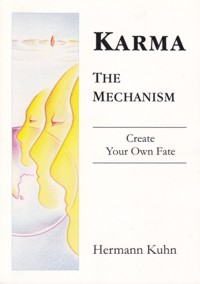
Sa asravah (2)
This attraction causes our consciousness and karma to interact (asrava). (2)
Our own activities are the very origin of the interaction between our consciousness[2] and non-living karmic matter.
Karma is an essential part of our life in the state of embodiment. It connects our consciousness to the physical world. It is the very factor that allows us to experience these embodiments in all their permutations and variations. On our path to a more enlightened and liberated state (moksa) it presents us with challenges[3] that train and test our responsibility for our own actions.
Karma is a kind of subtle matter[4] that constitutes the interactive karmic field which surrounds every[5] living being - our 'karmic body'. Much of the karmic matter we attract to this field is discarded immediately. Yet particular types of actions and emotions cause a more intense, long-lasting attachment of this subtle matter to our consciousness. These types of actions and emotions are described from sutra 10 onwards.
A large part of the karmic matter stored in our interactive karmic field is inactive (latent)[6]. How long karma remains inactive and at what point in time it becomes active, is determined by what area of life it influences - i.e. by its character or type.
For how long and how intensely we experience karma when it activates is determined by the depth of our emotional engagement in the action with which we originally caused the attachment of a particular karma to our interactive karmic field.
The activation (manifestation) of latent karma dissolves our bond with the activated karma. Dissolved karmic bonds do not affect us any more.
We usually interpret the manifestation of karma as positive or negative influences in our life, - e.g. as success or failure of our actions, our words (our ability to communicate and to convince) and as the power and clarity of our thoughts.
Yet there is no reason to see karma solely as burden that needs to be worked off diligently or suffered through stoically only to produce a feeling of relief at its final dissolution. Karma is nothing other than the mechanism that makes us thoroughly experience the themes of our life until we gained optimal knowledge from them and until our emotional attachment to these themes falls off.
What karma makes us experience is basically a neutral growth-process we need not interpret in a negative way. The better we understand how this process works, the less we feel victimized by it. The more we control its mechanisms and the faster we reach results we desire, the more we will interpret it as supportive.
Activities triggered by the manifestation of karma do not automatically bind further karma. Yet if we react to a karmic manifestation with strong - positive or negative - emotions, we attract new karma, i.e. we attach new karmic matter to our karmic field that will influence us. This renewed attraction can easily create a cycle of accumulating and discarding the same type of karma. In this case we usually get the feeling that the same theme of life is recurring again and again. This cycle of attracting and discarding the same type of karma appears to us as if there exists a strong (karmic) bond between our consciousness and one particular theme of life.
The mechanisms and conditions causing this apparent bond between karma and our consciousness are described in the next chapter. The present chapter explains
- how actions, emotions and thoughts attract karma to our consciousness
- how we - by our emotions and actions - determine strength, theme and duration of this (temporary) attachment
and - what types of actions and attitudes will cause renewed attachment between karma and our consciousness.
Sure - our sacred science is currently far too proud to research karmic molecules - but give it another 50 years and the situation might be completely different. Already now ideas that mind fundamentally affects matter keep popping up persistently in scientific circles. That science has not discovered karmic matter yet does not state anything against its existence.
 Hermann Kuhn
Hermann Kuhn
